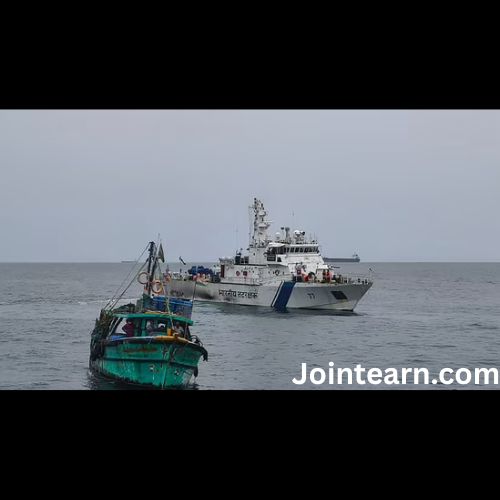
India’s east coast is preparing for the arrival of Cyclone Montha, a severe cyclonic storm currently developing over the Bay of Bengal, which is expected to make landfall near Kakinada, Andhra Pradesh, on the evening or night of October 28, 2025, according to the India Meteorological Department (IMD). The cyclone is forecasted to intensify rapidly in the coming days, bringing heavy to very heavy rainfall and strong winds to the eastern coastal states of Andhra Pradesh, Odisha, and West Bengal. Authorities in these regions are already on high alert, closely monitoring the cyclone’s trajectory and taking precautionary measures to mitigate potential damage.
Current Status of Cyclone Montha
As of October 25, the IMD reported that a well-marked low-pressure area over the southeast Bay of Bengal had concentrated into a depression. The system’s current coordinates place it approximately:
- 420 km west-southwest of Port Blair (Andaman & Nicobar Islands)
- 990 km southeast of Visakhapatnam (Andhra Pradesh)
- 990 km east-southeast of Chennai (Tamil Nadu)
- 1000 km southeast of Kakinada (Andhra Pradesh)
- 1040 km south-southeast of Gopalpur (Odisha)
The depression is moving west at a speed of 7 kmph, gradually gaining strength as it traverses the Bay of Bengal. The IMD has emphasized that the cyclone is likely to intensify into a deep depression by October 26, a cyclonic storm by the morning of October 27, and eventually reach severe cyclonic storm intensity by the morning of October 28.
Expected Landfall and Areas of Impact
The cyclone is projected to make landfall along the Andhra Pradesh coast, between Machilipatnam and Kalingapatnam, near Kakinada, late on October 28. Upon landfall, wind speeds are expected to reach 90–100 kmph, with gusts potentially touching 110 kmph, posing a threat to life, property, and infrastructure along the coast.
The severe cyclone is likely to bring heavy to very heavy rainfall to the eastern coastal states, significantly affecting Andhra Pradesh, Odisha, and West Bengal. Low-lying areas in these states are particularly vulnerable to flooding and waterlogging, and residents in these regions have been advised to stay indoors and follow official instructions regarding evacuations or relocations.
Authorities have issued early warnings to local administrations, urging them to activate disaster response teams, identify safe shelters, and ensure adequate preparation for communities living in flood-prone zones. Fishing and maritime operations along the Bay of Bengal are expected to be suspended during the storm to prevent accidents and casualties at sea.
Depression Over the Eastcentral Arabian Sea
In addition to the Bay of Bengal system, a depression over the eastcentral Arabian Sea is moving north-northwestwards and poses a risk of heavy rainfall along the western coast of India. As of Saturday, the system was located approximately:
- 380 km west-northwest of Panjim, Goa
- 400 km southwest of Mumbai, Maharashtra
- 620 km northwest of Mangalore, Karnataka
- 640 km north-northwest of Aminidivi, Lakshadweep
This system is moving at around 12 kmph in a west-northwest direction and is expected to bring heavy rains over Goa, Konkan, Gujarat, and Kerala within the next 24 hours. Although this depression is less intense than Cyclone Montha, it is expected to cause localized flooding, waterlogging, and disruption to normal life in affected areas.
Trajectory and Intensification of Bay of Bengal System
The depression in the southeast Bay of Bengal is moving westwards at 7 kmph, currently positioned approximately 460 km from Port Blair, 950 km from Chennai, 960 km from Visakhapatnam, 970 km from Kakinada, and 1030 km from Gopalpur, Odisha.
The IMD forecast indicates a clear trajectory for intensification:
- October 26: Depression will deepen into a deep depression
- Morning of October 27: Expected to strengthen into a cyclonic storm
- Morning of October 28: Anticipated to become a severe cyclonic storm
The predicted path indicates that Andhra Pradesh will bear the initial brunt of the cyclone, with Odisha and West Bengal experiencing heavy rainfall and gusty winds as the system moves inland or weakens. The IMD has advised residents and local authorities to remain vigilant, especially in low-lying coastal regions susceptible to storm surges and flooding.
Government and Administrative Preparations
State and district administrations in Andhra Pradesh, Odisha, and West Bengal are already taking precautionary measures. Some of the key steps include:
- Evacuation of residents in vulnerable coastal and flood-prone areas
- Deployment of disaster response teams, including the National Disaster Response Force (NDRF) and local emergency services
- Activation of emergency shelters and relief camps with provisions for food, water, and medical care
- Suspension of fishing and maritime activities along the affected coastlines
- Public advisories urging people to avoid travel, secure loose objects, and adhere to safety instructions
Authorities are also closely monitoring the cyclone’s intensity, wind speed, and rainfall estimates, while maintaining communication with local communities to ensure timely evacuation and rescue operations if required.
Impact on Daily Life
Cyclone Montha is expected to significantly disrupt daily life in the eastern coastal states. Anticipated impacts include:
- Heavy rainfall and flooding, particularly in low-lying areas and river basins
- Strong winds capable of uprooting trees, damaging houses, and affecting power lines
- Disruption of transportation, including delays in flights, trains, and road travel
- Temporary suspension of port operations and fishing activities along the coast
Residents have been advised to remain indoors, secure homes and vehicles, and avoid venturing out during high winds or flooding. Authorities are urging people to stay informed through official IMD bulletins and comply with safety instructions issued by local disaster management authorities.
Warnings for Vulnerable Populations
Health and safety experts have stressed that vulnerable populations, including the elderly, children, and individuals with pre-existing medical conditions, should take extra precautions during the cyclone. Exposure to flooding or storm-related hazards can pose serious health risks, and timely evacuation and adherence to safety protocols are critical.
Conclusion
Cyclone Montha represents a significant weather threat to India’s eastern coast. Expected to make landfall near Kakinada on October 28, the severe cyclonic storm is projected to bring heavy rainfall, strong winds, and potential flooding across Andhra Pradesh, Odisha, and West Bengal.
Simultaneously, the depression over the Arabian Sea is expected to bring heavy rainfall to western coastal states such as Goa, Maharashtra, Gujarat, Kerala, and parts of Karnataka. While this system is less severe, it still poses localized risksof flooding and disruption.
Authorities in both eastern and western coastal states are on high alert, with disaster management plans activated, shelters prepared, and early warnings issued to ensure public safety. Citizens are urged to follow official advisories, minimize outdoor exposure, and take all necessary precautions to protect life and property.
As Cyclone Montha approaches, the emphasis remains on preparedness, vigilance, and adherence to safety measures, as India braces for one of the potentially severe weather events of the season. The coming days will be crucial for monitoring the cyclone’s progress and mitigating its impact on vulnerable coastal communities.


Leave a Reply